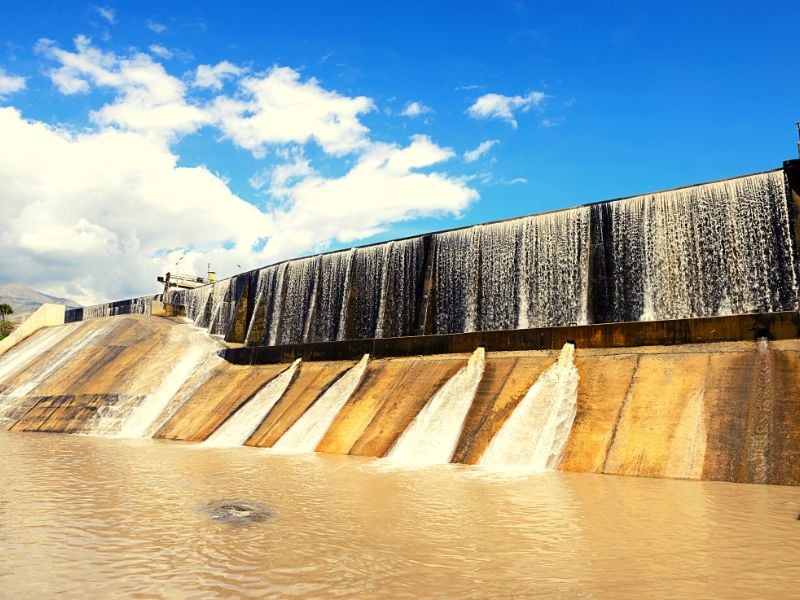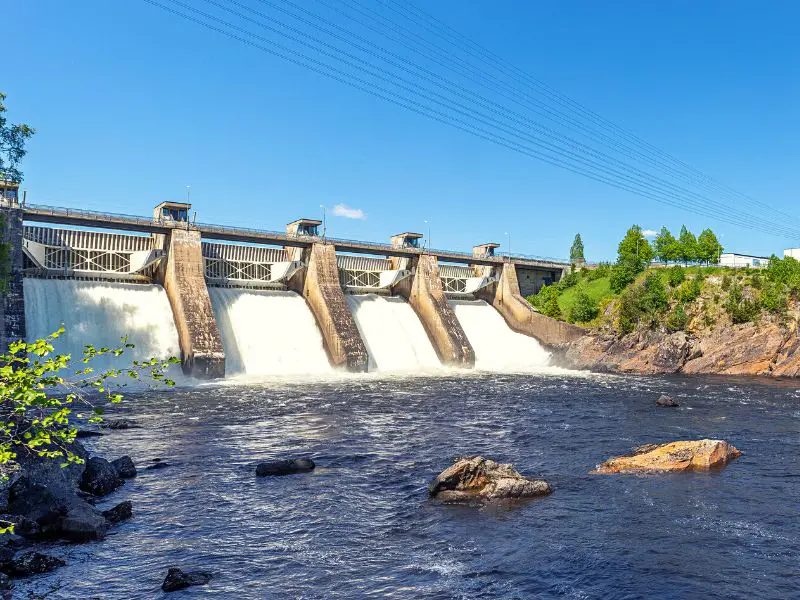When people discuss the pros and cons of hydropower, only a few things come up. The most commonly discussed benefits are that it produces renewable energy, so you’re contributing to a cleaner environment.
Hydropower also has jobs and revenue in rural areas. Those are significant advantages, but they pale compared to the severe disadvantages of this form of energy. So what are the disadvantages of Hydropower?
In this article, we will examine why hydropower can be terrible for the environment.
Is Hydropower a Source of Clean Energy?
First and foremost, yes. Hydropower is a renewable and clean energy source. There is no need to consume fossil fuels to create hydroelectricity, and the water cycle runs continuously. Thus we will never run out of hydropower. However, hydroelectric power is not infinite since there is a finite amount of water on Earth that can be harnessed (especially considering how many rivers have already been dammed).

What Are the Disadvantages of Hydropower & How Does It Harm the Environment?
A recent study published in Environmental Science and Technology found that hundreds of operating hydropower plants significantly influenced the climate more than fossil fuels. Yup, that’s right. Hydropower is often thought of as a green energy source. However, under certain conditions, hydropower plants can release more greenhouse gases than coal or oil-burning power plants.
Consequence #1: Damage to Habitats and Migratory Routes
When you stop a river’s natural flow, you also stop fish from getting to important places where they migrate. Many types of fish need inland rivers to reproduce. When dams halt the flow of a river, fish can’t get to their breeding grounds.
Over time, fish populations in rivers that have been dammed dropped by a lot. This is bad for the health of river ecosystems and people’s food supplies. Some hydropower plants use fish ladders to help fish get across rivers, but these devices are usually not big enough to allow fish to migrate in large numbers.
Consequence #2: Land Use
When a river is dammed, the land along its banks loses its natural path for water flow. Then it is converted into a reservoir. When reservoirs reach their capacity to hold water, they can often create floods that destroy homes, farms, and businesses on their banks. So the people who live in areas with hydropower plants can no longer access the resources they need to live on that land.
Consequence #3: Greenhouse Gas Emissions
Although generating electricity by spinning turbines with water does not directly utilize fossil fuels or create greenhouse gases, several recent studies have demonstrated that reservoirs formed by damming rivers considerably contribute to atmospheric greenhouse gas emissions. This is because organic matter, such as dead plants, trapped in reservoirs decomposes and releases carbon dioxide and methane.
Making Hydropower Sustainable for the Planet
There are many methods to make hydropower systems more ecologically friendly. First, it should start with better land use planning around river basins upstream of dams. The second is preserving the natural ecosystem in a river’s watershed, so erosion can be better contained, which can assist in reducing greenhouse gas emissions from reservoirs since there will be less decomposing organic matter in the water.

There are also steps to lessen the effects of hydropower on the habitats and migrations of fish. Some hydroelectric facilities use ” trap-and-haul ” programs to catch fish, move them around a dam, and then set them free. The Department of Energy (DOE) has recently paid for research and development on “salmon cannons,” which launch migrating fish over a dam.
More careful planning of where to put dams, so they don’t block the most critical migration routes is a better long-term solution in many places. Some fish species habitats are restored when old dams are taken down, and rivers are allowed to flow more as they did in the past.
Hydropower and the Internet of Things
Like many other industries, the hydropower sector hopes to profit from the Industrial Internet of Things (IIoT).
General Electric (GE) estimates that increasing hydropower’s digitalization could cut carbon emissions by 17 metric tonnes (mt) while boosting output by just 1 percent. This might result in operational cost reductions of $5 billion.
Enel Green Power (EGP), an Italian business, has also used IIoT technology in its Wireless Sensors for Hydro Monitoring (WISY) project. WISY is a ‘dense’ wireless sensor network that collects and analyzes data in real time.
Adopting this technology might make hydropower more innovative and efficient, resulting in additional financial and carbon benefits.
The Future of Hydropower
While solar and wind are the renewable energy superstars of the 21st century, due to their rapid cost decline and development, hydro is and will continue to be the largest renewable energy source globally. The IEA anticipates it will continue contributing 16 percent of global power production in 2025.
Modernizing existing hydroelectric infrastructure might boost efficiency, recoup some water stress losses, and secure the continued operation of facilities for decades ahead.

Between now and 2030, 127 billion dollars will be invested globally to modernize outdated facilities. This represents roughly a quarter of worldwide hydropower investment and over ninety percent of hydropower investment in Europe and North America.
In other regions of the world, however, most investment is directed toward new plants. By 2030, large, state-owned projects in Asia and Africa are predicted to account for more than 75 percent of new hydropower capacity. However, some are concerned about the environmental effect of such initiatives.
Overall, the growth in hydropower technology expenses is decreasing and is set to contract by 23 percent by 2030. Reversing this trend mostly depends on expediting regulatory and permitting processes, establishing high sustainability requirements, and implementing pollution monitoring systems to assure community acceptability.
Author’s Note
In conclusion, hydropower is a renewable energy source, but our planet’s health depends on how we use it. Solutions to make hydropower sustainable for the environment are being developed and tested.
Hydropower has proven to be beneficial, but there will be consequences that affect us all if we don’t pay attention and fix what’s wrong with this form of clean energy. So let’s all work together to find solutions for making hydropower environmentally friendly so it can do what its purpose is: bring about clean, renewable energy for everyone.


3 thoughts on “Disadvantages of Hydropower and Its Impact on the Environment”